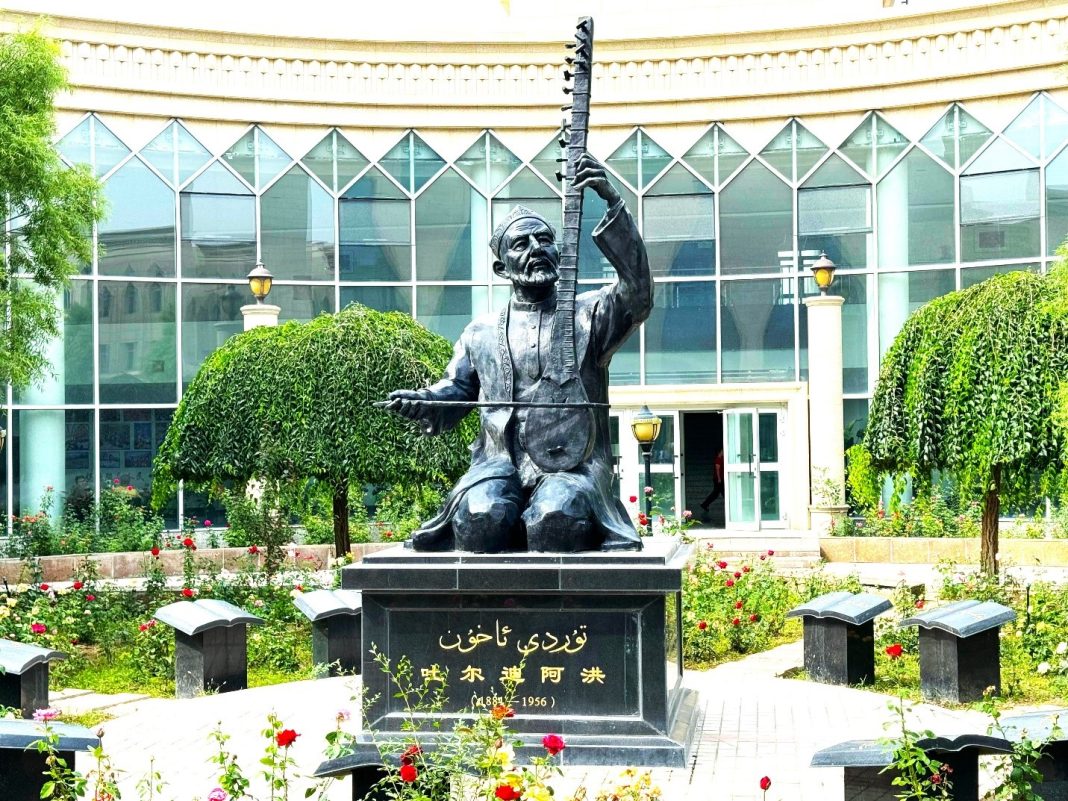Urumqi: Xinjiang’s cultural heritage is a vibrant tapestry of diverse ethnic traditions, with uygur culture at its core. Rich in music, dance, and art, the region is renowned for its traditional Muqam, bustling bazaars, and unique cuisine, all reflecting a deep history shaped by Silk Road influences. These heritages are also a testament to the enduring spirit and resilience of the people of the Xinjiang Uygur Autonomous Region.
“Seeing is believing!” After visiting the region with friends, I witnessed the remarkable development Xinjiang has undergone under China’s Poverty Alleviation Program. Alongside economic progress, there has been a dedicated effort to preserve and revitalize traditional cultural practices, including the cherished Muqam, the cornerstone of Uygur music. Effective counter-terrorism and counter-extremism measures have curbed violence in the region, allowing residents to live in peace and security. Today, Xinjiang’s vibrant cultural heritage thrives once more, with communities embracing their traditions while enjoying the benefits of modern development. For much of the outside world, including myself, I assumed that China’s focus was solely on technological advancement and that the Chinese people were entirely driven by a work-centric lifestyle, with little room for social life. However, I was completely wrong. The Chinese people deeply cherish their culture and heritage, more than I ever imagined. This love is evident in their daily activities and their dedicated efforts to preserve and celebrate their rich cultural traditions.
Wherever you go in Xinjiang—whether it’s the International Grand Bazaar in Urumqi, the Kazanqi Ethnic Culture Street in Yining, Huocheng County, the ancient Shaanxi Mosque, or Khorgos near the China-Kazakhstan border—you are immediately immersed in the region’s beauty and rich cultural heritage. Song and dance performances abound, each with its unique history and ability to tell a compelling story.
Among these cultural treasures, Xinjiang Uygur Muqam stands out as one of the most profound and captivating traditions, embodying the essence of Xinjiang’s artistic soul. A mix of songs, dances, folk, and classical music, Muqam is more than just entertainment; it is a living symbol of the region’s cultural identity.
During our visit to the Xinjiang Art Theater Muqam Art Troupe, we had the privilege of engaging in discussions with experts and Muqam artists. Upon entering the building, we were greeted by an impressive statue of Turdi Akhun, a revered artist renowned for his mastery of all Twelve Muqam. This central figure symbolizes the rich cultural heritage and artistic excellence that the theater proudly upholds. The traditional songs we watched varied in rhyme and meter, performed both solo and in groups. We enjoyed three performances by leading Muqam singers, instrumentalists, and dancers. Our interpreter explained that the songs revolved around themes of love, weather, and the beauty of the countryside. –Agencies






